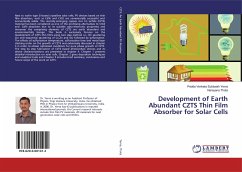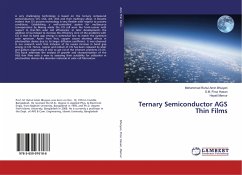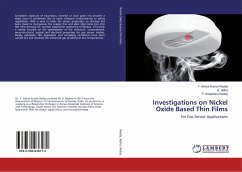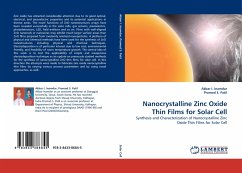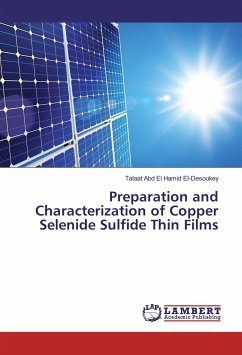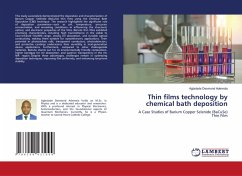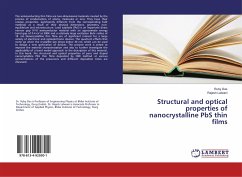
Preparation of Cu-Sn-S Thin Films for Solar Cell Application
Versandkostenfrei!
Versandfertig in 6-10 Tagen
56,99 €
inkl. MwSt.

PAYBACK Punkte
28 °P sammeln!
The most popular polycrystalline thin film solar cells such as CdTe and Cu(In, Ga)Se2 showed high photovoltaic conversion efficiencies of 22.1% and 22.6%, respectively. However, the aforementioned absorber layers contain scarce (In, Ga, Se, and Te) and highly toxic (Cd, Se, and Te) elements which limit their future prospects. Due to this, researchers developed a new and promising absorber material, Cu2ZnSnS4 (CZTS), but the deposition of single-phase CZTS thin films is difficult due to its complex structure. In addition, suppression and detection of secondary phases (Cu-S, Zn-S, Sn-S, and Cu-S...
The most popular polycrystalline thin film solar cells such as CdTe and Cu(In, Ga)Se2 showed high photovoltaic conversion efficiencies of 22.1% and 22.6%, respectively. However, the aforementioned absorber layers contain scarce (In, Ga, Se, and Te) and highly toxic (Cd, Se, and Te) elements which limit their future prospects. Due to this, researchers developed a new and promising absorber material, Cu2ZnSnS4 (CZTS), but the deposition of single-phase CZTS thin films is difficult due to its complex structure. In addition, suppression and detection of secondary phases (Cu-S, Zn-S, Sn-S, and Cu-Sn-S) in CZTS thin films are critical challenges. To solve this problem, growth on an alternative absorber layer is needed for the preparation of solar cells. Keeping the above research areas in mind, we conducted considerable research on the preparation of Cu-Sn-S layers using a two-stage process, characterization and tuning the structural, optical, and electrical properties of the Cu2SnS3 layers. More importantly, XRD, Raman, EDAX, SIMS, SEM, AFM, UV-Vis-NIR spectrophotometer, and Hall Effect characterizations revealed the suitability of Monoclinic Cu2SnS3 for solar cell device application.





